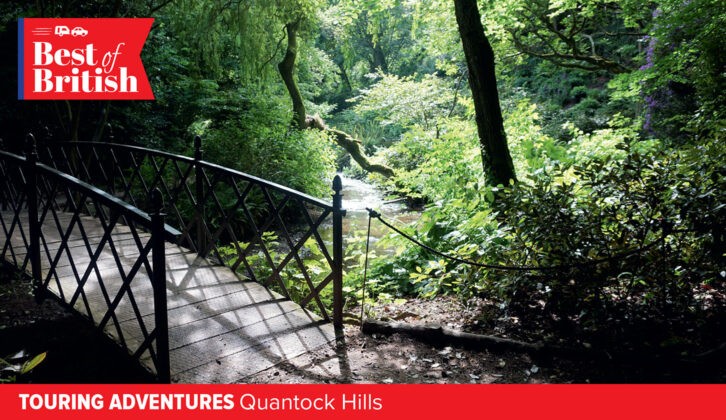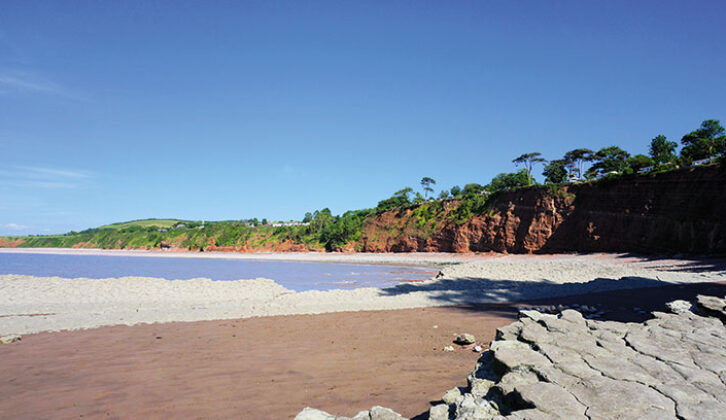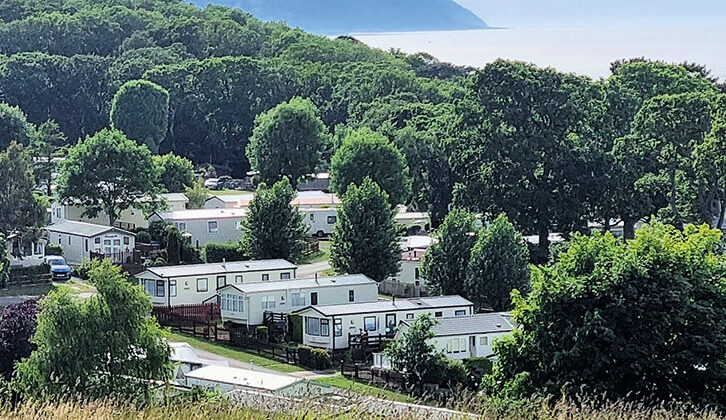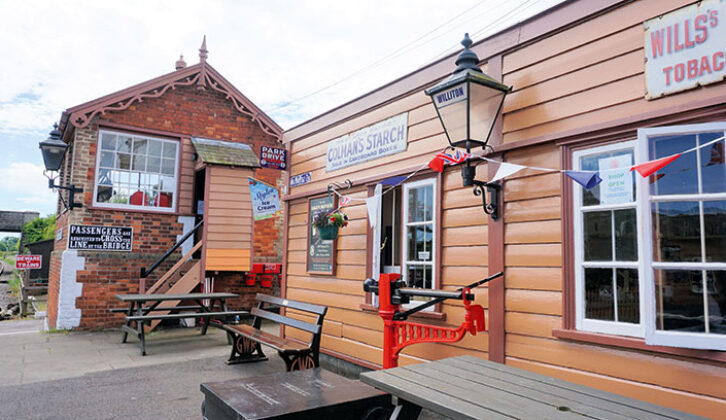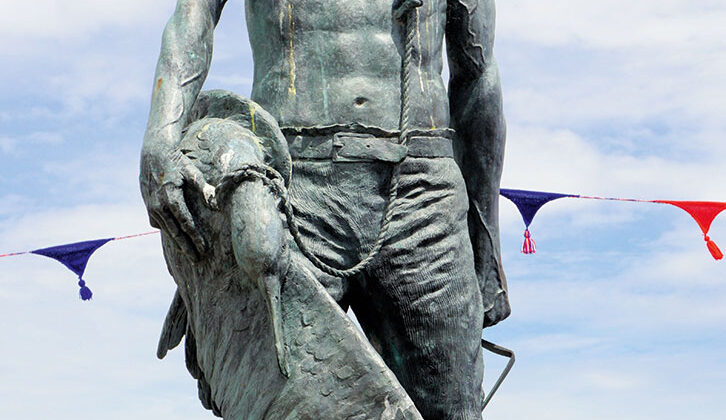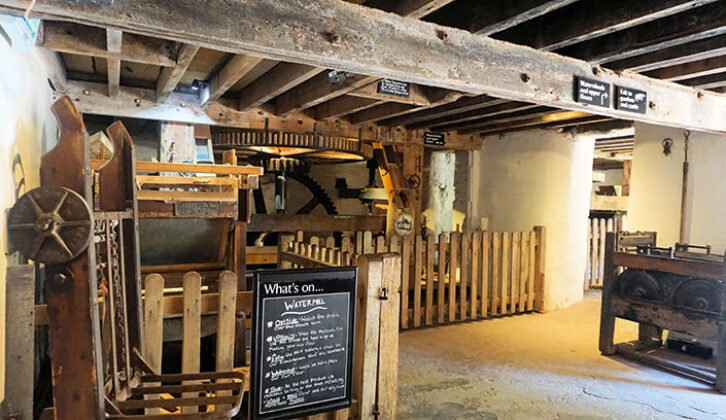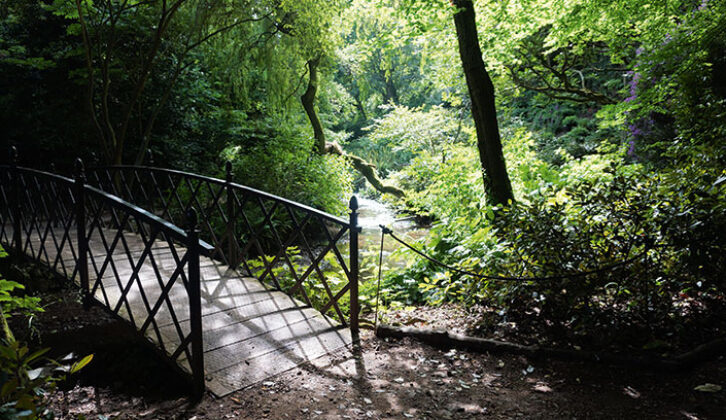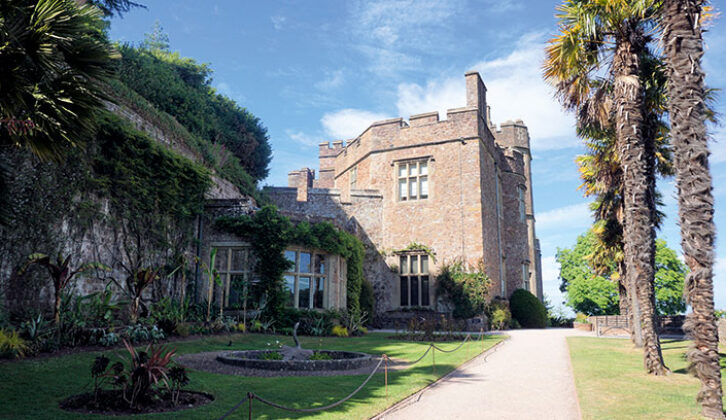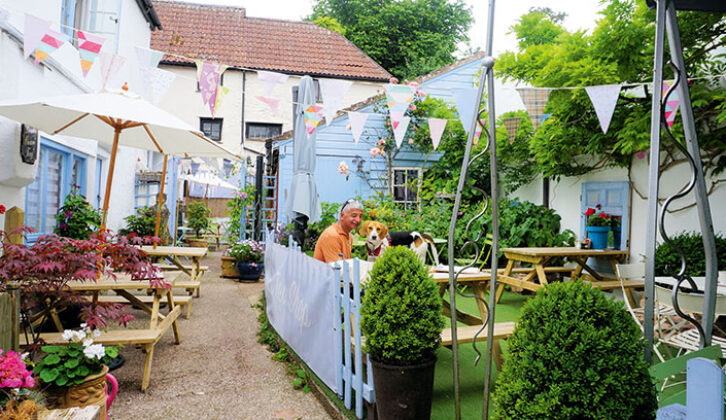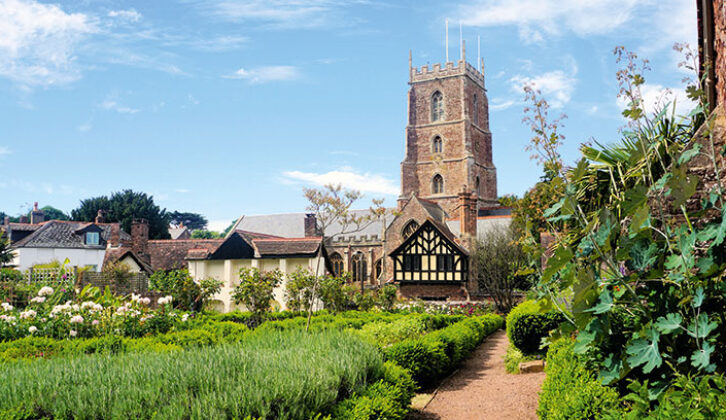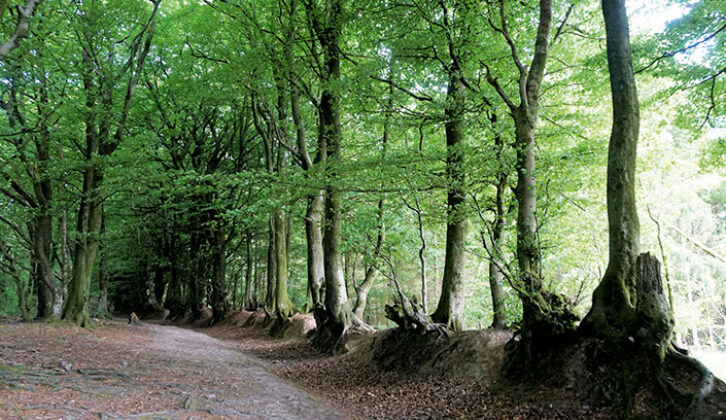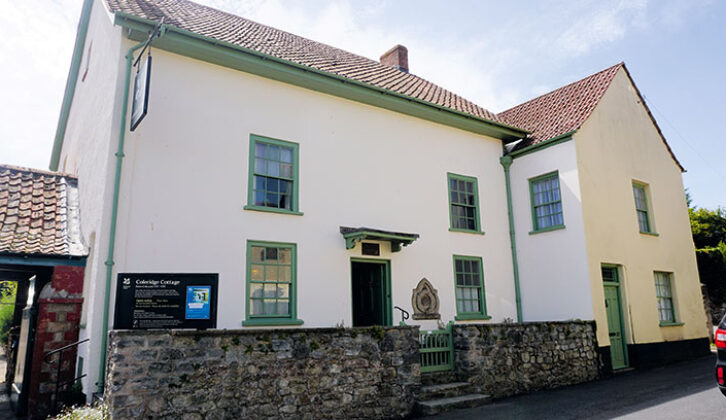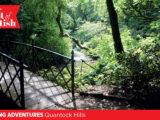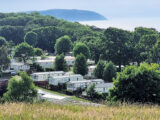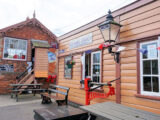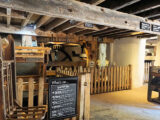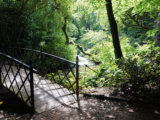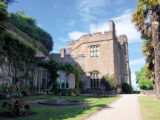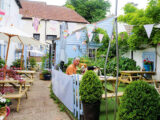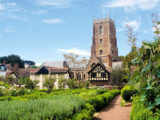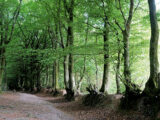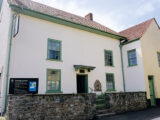The Quantocks, an area measuring about 12 miles by three and covering some 38 square miles, run from the coast through the Somerset hills to Taunton.
Offering plenty of walking opportunities and pretty villages to explore, the region abounds with ancient history – and a fair few literary connections, as we discovered.
We were spending a week here, starting at Home Farm Holiday Centre in Williton on the Somerset coast – a large dog-friendly caravan park with three dog-walking fields, an indoor swimming pool (which we didn’t use as the weather was so good), an on-site bar and beer garden (which we did use as the weather was so good!) and sea views.
The seaside caravan site also boasts a glorious stretch of beach at St Audries Bay, one of several beaches in the region where dogs are allowed all year.
Willow the pup had fun exploring the rock pools, while Ro and I enjoyed a gentle wander along the beach and a spot of fossil hunting – incredible to think that even us amateurs can find evidence of creatures who lived here millions of years ago.
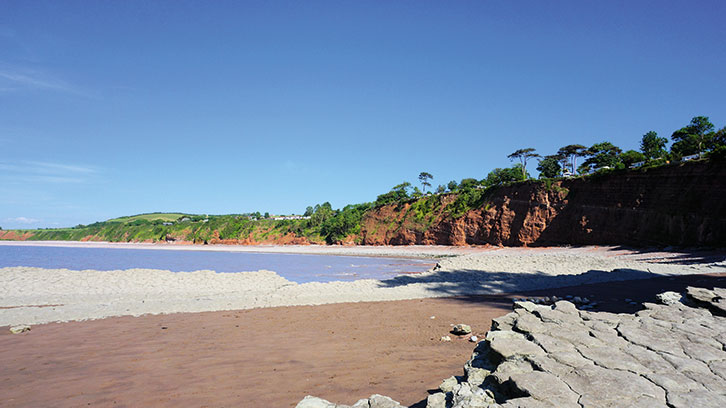
When we were all finally tired out, we enjoyed a relaxed pint in the garden of the on-site Harness Room Bar, before settling down with an al fresco ploughman’s and a bottle of chilled white wine.
Stations and steam
The heritage West Somerset Railway runs past Williton, the station still reminiscent of its Victorian heyday and the first of our ‘bookish’ discoveries of the week.
Those with a keen eye for children’s TV might recognise the line as the setting for The Lion, the Witch and the Wardrobe, filmed in 1988, when it carried the children from London (Minehead) to the countryside (Crowcombe Heathfield).
The steam timetable was a little limited during our stay (just outside the main summer season), so next morning, we drove there and settled for a quick look around the station before motoring off to explore the nearby coast.
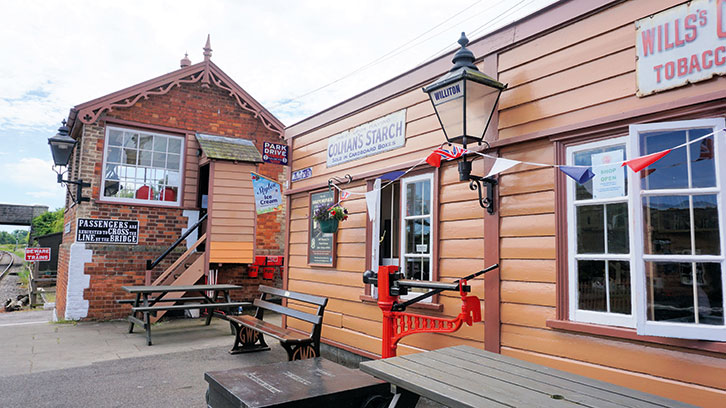
First stop, the harbour town of Watchet (also on the railway line), 10 minutes from Williton. Happily for Ro – he does love a good mooch around a market – there was
a street market in full swing. With stalls selling everything from tribal wall hangings to handmade fudge, it made a diverting change from the usual shops.
Watchet has a history stretching back to Alfred the Great, and a museum telling its interesting story. It was also the inspiration for Samuel Taylor Coleridge’s Rime of the Ancient Mariner – our second literary find.
He lived nearby and came upon Watchet during a walk with his friends William and Dorothy Wordsworth – and was very taken with it. Today, a statue of said Ancient Mariner sits proudly on the harbour as testament to this part of its history and to the Quantocks becoming known as the birthplace of Romantic poetry.
But we had lingered long enough, and it was time to continue our journey – next stop, lunch at a seaside café in Blue Anchor Bay, beside its wide, sandy beach.
It was here that Willow made a discovery that cemented her love for the seaside – peanut butter flavour doggy ice cream is her new favourite thing!
Destination Dunster
And then to our ultimate destination for the day. Although home to another West Somerset Railway station, Dunster is more famous for its 1000-year-old castle (now a family home) and working water mill.
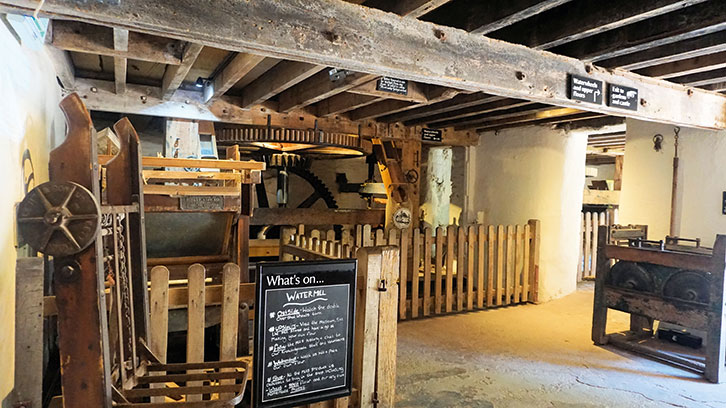
The castle gardens riverside walk was magical, feeling almost prehistoric in places as sunlight streamed through giant rhubarb, yew trees and a fine specimen of the rare handkerchief tree (apparently the seeds were smuggled into the UK from South Africa in the handbag of a previous owner of the castle, Alys Luttrell).
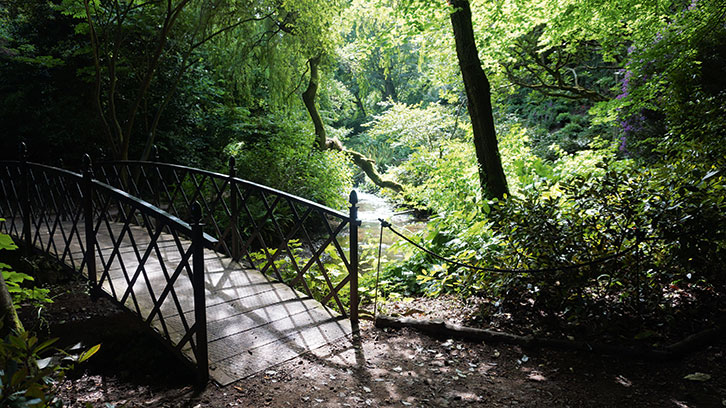
There is also an orangery and swan pond, among other charming outdoor features to be enjoyed here. Some paths might be a little difficult for the less mobile, though.
There is plenty to see inside the castle, too, including the Leather Gallery, library and, if you are brave, the haunted crypt.
We then made the happy discovery that another children’s TV series, Enid Blyton’s Famous Five, was filmed in and around Dunster and its castle – cue our own adventure as Julian, Anne and Timmy!
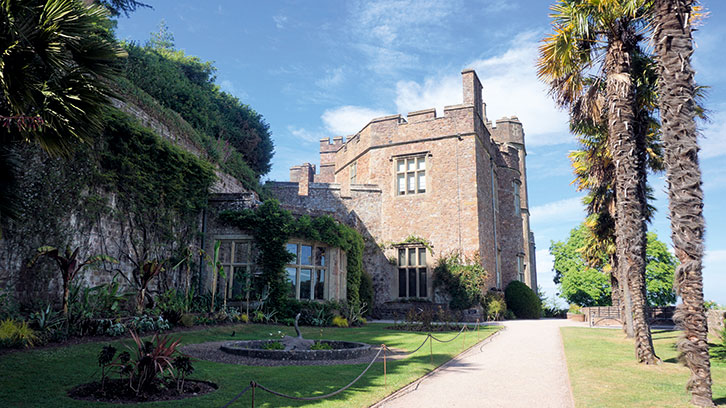
Frivolities over, we paid a quick visit to the Stables Shop and the working water mill (a Grade II listed building), where I bought some flour, before strolling around the village. A late afternoon coffee at Tessa’s Tea Shop and a quick photo opportunity at the ancient Yarn Market and Packhorse Bridge completed a great day out.
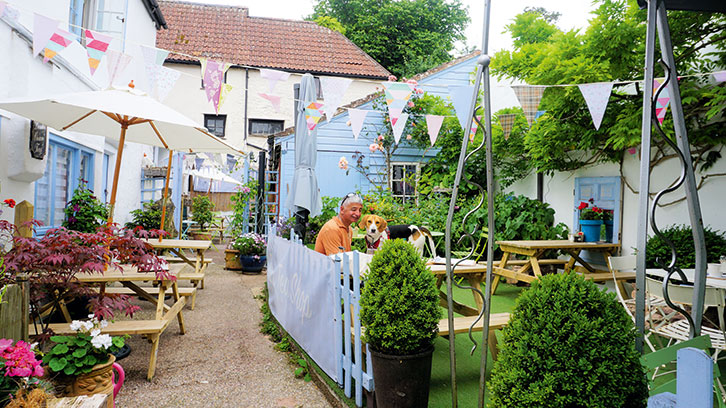
Head for the Quantock hills
Next day, we ventured into the Quantock Hills. A quick look at my map offered up the intriguing Dead Woman’s Ditch and Robin Upright’s Hill.
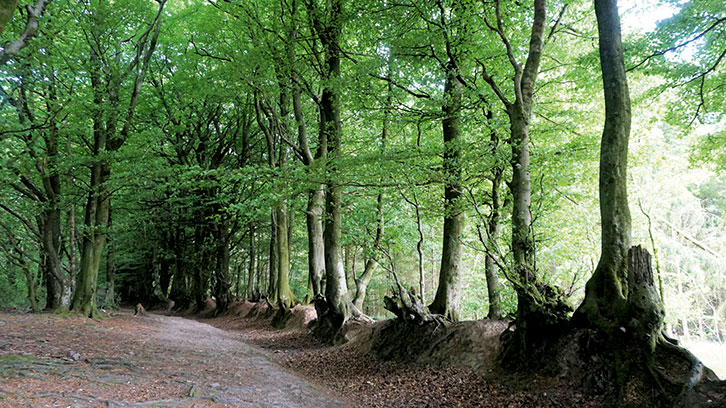
Sitting in the middle of the Quantocks, this seemed the perfect area for a walk. Despite its name, Dead Woman’s Ditch turned out to be a prehistoric earthwork near Over Stowey, and yes, perfect walking country in oak woods and heathland.
From the top, there are fantastic views over the Bristol Channel, Gower Peninsula and beyond. It is easy to see why this was Britain’s first Area of Outstanding Natural Beauty and provided such inspiration to the likes of Coleridge and Wordsworth.
There is also a 51-mile trail named after Coleridge, which winds its way from his home at Nether Stowey to the coastal town of Porlock, traversing hills and heath.
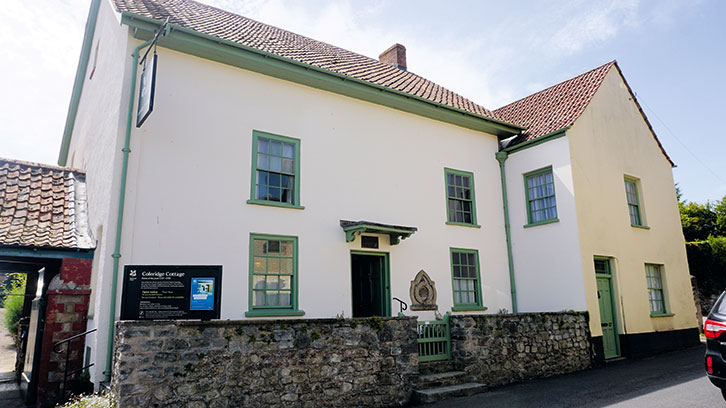
A more recent wordsmith, Bryan Adams, filmed the video for ‘Everything I Do’, the song that spent a gazillion weeks at number one, in these hills and on our neighbouring beach at Kilve (dog friendly and a Site of Special Scientific Interest, thanks to its many fossils) – inspiration for all!
Having enjoyed a walk in the countryside and met some local ponies in the car park, we drove back to the campsite via Nether Stowey, so we decided to stop and see where some of Coleridge’s most famous works, including Kubla Khan, were written. The village is only small, but as well as the poet’s house, it is also home to a Victorian clock tower and a ruined castle.
Then it was feet-up time on our pitch, and a chance to make the most of the warm evening with a barbecue. A ramble in one of the dog-walking fields completed another enjoyable day in the Quantocks.
Ancient oaks
Another day, another walk, this time to see Woodlands Hill, an area of ancient oaks and Iron Age hill forts giving it an air of mystery and timelessness.
I could imagine our ancestors carving out a living where now there are bridleways and footpaths. This included the business of burning oak to create charcoal, notably for use by the Royal Navy, and although this practice had largely ceased by the start of the 20th century, it has left a legacy of gnarled branches to add to the ambience.
We were lucky enough to encounter a couple of majestic red deer quietly grazing, although they were too deeply hidden in the undergrowth to capture on camera.
Our reward for reaching the hilltop was more of those splendid views.
Once again, we found ourselves following in the footsteps of Coleridge and the Wordsworths – Dorothy mentions their love for Woodlands Hill in her journal.
Earlier, we had passed a pub, The Hood Arms, and after working up an appetite – and a thirst – on our walk, decided to call in there for dinner. Good decision!
The pub had a lovely beer garden with a boules court. Oh, and of course it was often frequented by that pair of poets we seemed to be following around.
Then it was time to leave Home Farm for the southern fringes of the Quantocks at Taunton, and more bookish connections.
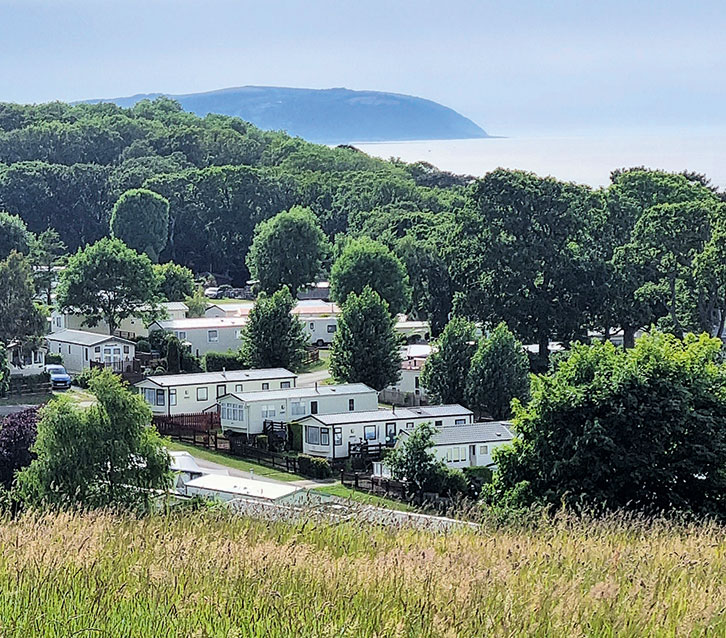
Our home for the next two nights was Tanpits Cider Farm, just 40 minutes from the coast but a world away in terms of the landscape. Now we were in the midst of an apple orchard, with peacocks and guinea fowl running free, a river and a canal flowing past, and a bustling market town just a couple of miles away.
Literary connections
Our journey south took us past the village of Combe Florey, of interest to yours truly because it was where Evelyn Waugh, author of Brideshead Revisited (a book that I had the dubious pleasure of studying for my A Level Literature) lived for a while.
More literary connections can be found just a few miles south of Combe Florey, in Bishops Lydeard, home to Arthur C Clarke, who was born at Minehead. Clarke went
to school in Taunton, which was our final destination on this trip. I was beginning to realise just how rich and varied the literary links in the Quantocks have been.
Camping in the orchard
Arriving at Tanpits, we were left to choose our own spot among the apple trees. As the weather was still glorious, we decided to spend our first afternoon on site relaxing and sampling the farm’s liquid produce – sometimes you have to just stop and do a little bit of nothing very much, except enjoy the wonderful sunshine and scents of an English summertime.
Next day brought a few showers, but that didn’t dampen our spirits – this is England and we are campers, after all! We walked along the water’s edge into Taunton, where we window-shopped and visited the Museum of Somerset, housed in the old Taunton Castle. Here we learnt something of the origins of the town, which date all the way back to the seventh century.
It was a centre for the wool trade in medieval times, and came under siege during the Civil War in the 1600s. The Victorian era saw the arrival of the railway and renewed popularity for the town.
Returning to Tanpits, we had time to freshen up before taking the 10-minute stroll along the canal to The New Mill pub for dinner – seabass for me, steak for Ro and a couple of dog treats from the staff for Willow (dogs are only allowed in the garden and bar, not the restaurant).
Then all too soon, our sojourn in the Quantocks was over. It is easy to see why this area is so popular with walkers and holidaymakers, and why it has been the source of so much literary inspiration.
It is the perfect destination for enjoying the great outdoors, as well as some ancient English history, and we will be back next time we fancy spending a few days walking in the hills – or writing some poetry!
If you’re thinking of heading to the area, our guide to the best caravan parks in Somerset, Avon & Wiltshire could help you find the campsite to stay at.
When to go to the Quantocks
We toured the Quantocks in June, but there is plenty to see and do in the area whenever you choose to visit. Bear in mind, though, that the coastal resorts can get quite busy during the peak season.
Where we stayed in the Quantocks
St Audries Bay, Williton, Somerset TA4 4DP, 01984 632 487
Dyers Lane, Bathpool TA2 8BZ, 01823 974 845
Find out more
- Quantock Hills Area of Outstanding Natural Beauty
- Hiking trails
- The Coleridge Way
- Dunster Castle
- Coleridge Cottage
- West Somerset Railway
- The Museum of Somerset
Lead image: Sue Taylor
Head to our Best of British: Touring Adventures section for more inspiration for your next trip.
If you’ve enjoyed reading this article, why not get the latest news, reviews and features delivered direct to your door or inbox every month. Take advantage of our brilliant Practical Caravan magazine SUBSCRIBERS’ OFFER and SIGN UP TO OUR NEWSLETTER for regular weekly updates on all things caravan related.
